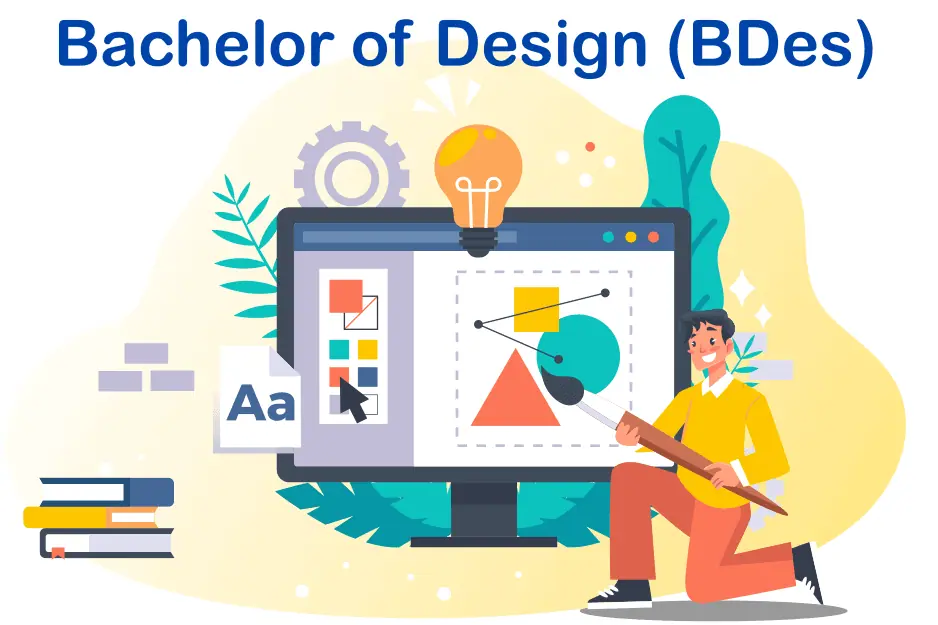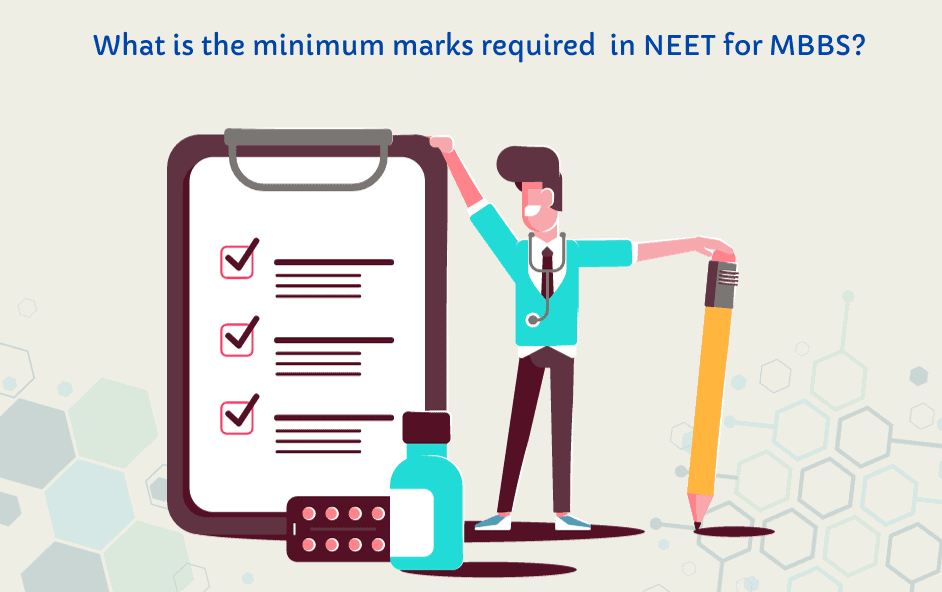One of the most well-known undergraduate degrees in design after 12th is the Bachelor of Design (BDes). Students enrolling in this four-year bachelor of design course in India can focus on streams like fashion design, interior design, graphic design, multimedia design, VFX design, visual communication, textile design, game design, and accessory design. As the creative business expands quickly, there is a strong demand for designers and individuals with design backgrounds. It is, therefore, the perfect time to start this course.
The emerging new technologies have expanded the BDes degree’s reach and opened up professional options in various industries. Students who earn a BDes degree can start working immediately after finishing the course. The best is to get an internship with one of the industry’s top designers to increase their chances of getting hired.
Continue reading to find out more about this degree program.
What is a Bachelor of Design (BDES)?
After completing their 10+2, students can pursue one of the most renowned design degrees. This 4-year curriculum gives trainees technical knowledge in various fields such as fashion, garment, leather industries, Knitwear, Accessory design, product design, and communication design.
Core subjects, including CAD, CAM, product development, marketing, and content related to specializations, are all included in the extensive curriculum of the design program. Additional topics covered include electives, vocational training, personality and skill development, and specialization-specific information.
Why Take a Bachelor of Design Course in India?
The candidates should consider the Bdes Course a viable academic option for the following reasons.
Better Job Opportunities: The Indian apparel market values at USD 59.3 billion, placing it sixth in the world behind the UK and Germany. For BDes graduates, this significant development will herald a new age of better work chances.
Good pay and additional perks: The average annual wage for BDes graduates in India is INR 495,500, according to the payscale website. In addition to pay, BDes graduates are eligible for several benefits, including travel expenses, health insurance, and PF.
Possibility of working in a developing industry: Data from different news sources indicate that the Indian fashion industry will expand between 10 and 12 per cent over the next few years. This would present opportunities for growth in the business as well as for a variety of job responsibilities.
Possibility of pursuing multiple specializations: Applicant portfolios may include BDes in Fashion Design, BDes in Product Design, BDes in Fashion Communication, and other fields.
Possibility of Becoming an Entrepreneur: After completing the BDes program, students can launch their own fashion design company or operate a consultancy. After completing the course, many graduates launched their apparel brand.
Who shall pursue a Bachelor of Design course?
- BDes is a course that candidates who want to work in design should take.
- Candidates aspiring to work as fashion designers should enrol in BDes programs focusing on fashion design.
- The interior design course is for students who wish to work for architectural firms.
- Students who want to explore visual Communication, such as user interface, storyboarding, and graphic design,
- Candidates interested in designing a product from scratch, considering aesthetics and ergonomics.
Eligibility for Bachelor of Design course in India
The application process for BDes admission follows a predetermined schedule that includes written entrance exams, group discussions, and other requirements. Merit-based access may also be available at certain universities. Applications for this course are open to students who meet the qualifying conditions listed below.
- Students may enrol in the BDes program after passing Class 12 or an equivalent qualifying test.
- Furthermore, there are no stream restrictions at the 10+2 level, students can study any subject humanities, sciences, commerce, and arts.
- Maximum age shall be less than 24 years to be eligible for entrance exams.
BDes Course Specializations
There are numerous specializations in which bachelor of design courses in India are offered. The total fee ranges from INR 4 to 20 lakhs for a 4-year degree.
BDes in Fashion Design: A BDes in Fashion Design offers a solid foundation in design and fashion, preparing students to become skilled and qualified managers and designers. Instead of creating experts, the course provides an integrated approach to design and is adaptable, giving students various abilities that enable them to work across multiple design disciplines.
Some leading employment opportunities after completing a BDes in Fashion Design are Fashion and Apparel Designer, Costume Designer, Fashion Show Coordinator, Stylist, Fashion Reviewer, etc.
Bachelor of Design in Textile and Apparel: The textile and apparel design industry is expanding quickly. Graduates of the Bachelor of Design in Textile and Apparel Design program can pursue careers in the design and development of knitted, woven, or printed materials and embroidery, print, weave, colour details, texture, and other fields.
BDes in Fashion Communication Design: The most recent information and technological advancements in visual communication design are included in the Bachelor of Design program in communication design.
This offers various employment options, including creative/art directors, graphic designers, brand consultants, and design consultants. Developed and taught by leading figures in Indian design, it’s a comprehensive degree.
Bachelor of Knitwear Design: Using sophisticated machinery and processes, the knitwear design plan is also designed for knitted apparel. Students can complete Knitwear Design courses at the undergraduate, postgraduate, certificate, and diploma levels.
A variety of subjects, including fashion art and sketching, fabric production, knitwear pattern making, various types of knitting, computer-aided knitting, knitwear trends and forecasting, design process, knitwear production and planning, retailing, and marketing, are covered in the knitwear design course curriculum.
Bachelor of Accessory Design: With various materials, techniques, and technologies, accessory design courses seek to assist students in envisioning and producing systems and accessories for their daily lives. For students, the Accessory Design course curriculum offers countless potential in comfort items, space accessories, and personal accessories.
Students can pursue careers in jewellery design, product design, home accessories, interior design, and other related fields. A fee of INR 1 lakh to INR 4 lakh is required to follow the course.
Bachelor of Industrial Design: Industrial design students can find employment in various fields, including automotive, medical, furniture, and home appliances. Industrial Designers know about aesthetics and ergonomics and are responsible for good A surface design.
Bachelor of Communication Design: Visual Communication communicates ideas through pictures, charts, graphs, diagrams, and designs. Visual Communication is a rather unusual course emphasizing images rather than words. Pie charts and bar graphs are examples of ideas and techniques utilized to help make the message easier to understand.
Technology and art are combined in the creative process of visual Communication. To draw in an audience, a graphic designer uses a range of communication mediums and instruments. Creative and artistic abilities are essential to pursue a career in this profession. Numerous colleges offer undergraduate, graduate, and diploma programs in Visual Communication.
Bachelor of Leather Design: The Leather Designing course covers all the bases regarding leather raw materials, processing, product maintenance, industrial training, and touring. It also covers other facets of the luxury goods sector, like fashion forecasting, brand awareness, and conventional and contemporary leather design techniques.
The luxury goods industry’s clothing, accessories, and footwear contain many leather-based products. Most goods made of leather include shoes, purses, belts, clothing, luggage, and auto accessories, among other items. Leather designers have a lot of opportunities in the billion-dollar leather sector since all of the world’s luxury brands use leather in their products, whether synthetic or organic leather.
Entrance exams
To be admitted to a bachelor of design course in India, candidates must take a writing, drawing, and interview-based entrance exam. The BDes course admissions procedure consists of several parts such as entrance exams and group discussions.
Some standard B.Des entrance examinations are UCEED, AIEED, NID DAT, NIFT GAT, FDDI AIST, and MAH CET.
Scope and Salary
The design sector is growing at a very rapid pace. After completing the BDes degree, candidates have many career options. Project-based learning and applying theory through design construction and projects get more weight in BDes courses.
Candidates can pursue an MDes, MFM, or MBA degree after finishing the BDes course. Whether they work in clothing, textiles, graphics, glass, leather, interiors, jewellery, ceramics, furniture, automotive, or animation highly experienced designers have a lot of demand. More clients prefer attractive designs as business competition rises.
Job and Salary for BDes
Jobs are available in e-commerce, advertising, fashion, architecture, production, media, and entertainment industries. BDes students have employment opportunities as Product designers, graphic designers, interior designers, fashion designers, and digital media designers. BDes work prospects are widespread because of the heightened prestige that design has attained in society. The top recruiters from all sectors looking for BDes are Flipkart, Hindustan Unilever Limited, Healthcare, General Motors Design, GlaxoSmithKline Consumer Healthcare Ltd., etc.
The bachelor of design salary range for graduates in the table is INR 4 to 10 LPA. There are certain exceptions, where the highest package could be 20 lakhs or more. Numerous factors influence compensation, such as the type of work, experience, education, and training. Below is the average salary of a fresher in different specializations.
| BDes Job Profiles | Average Salary Package (in INR) |
| Graphic Designer | 5- 7 LPA |
| Fashion Designer | 6- 9 LPA |
| Art Director | 4- 6 LPA |
| Textile Designer | 5.5-7.5 LPA |
| Industrial Designer | 8- 10 LPA |
| Product Designer | 5- 7 LPA |
| UI/UX Designer | 8- 10 LPA |
Conclusion
Whether you start your enterprise or work in the corporate sector, the Bachelor of Design Course in India offers endless opportunities. This educational journey is transformative. It fosters creativity, refines technical abilities, and prepares graduates for prosperous jobs in the dynamic and always-changing design field. The theoretical knowledge and design abilities Bachelor of Design graduates possess make them suitable for various industries.
Also, read about fashion design career




